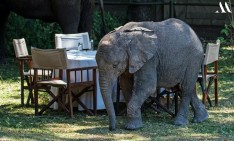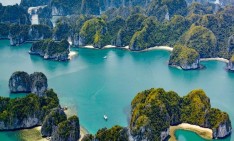The reason behind selecting these 4 exotic locations is more holistic than just a listicle for another travel article. It starts with two people getting married and what ensues…
I find couples with individual personalities make the most interesting plans, including the honeymoon, and they are the ones who decide how long the honeymoon period will last or will it be a love affair of a lifetime. After the wedding euphoria, what follows is a journey of change; two personalities as unique as Venus and Mars bring the freshness and the necessary chaos for an exciting adventure. It is when you allow another person in your personal space and adjust to their presence; sometimes loving; sometimes frowning, yet trying to retain your interesting, individual freedom and solidarity. I feel the union of these two distinct spheres, both sweet and turbulent, makes wonderful stories for the rest of the life.

Honeymooners and every couple with a sense of humour must travel to a new place. Travel, for all its spontaneous joys, does disrupt an individual’s lifelong routines and throws one into many hilarious confronting scenarios with their partner. The quirks of being together has constantly been the source of inspiration and exasperation. The minute you enter a hotel room, you mentally divide it into “his” and “your” sides; stake out your side of the room, your side of the bed, and your night table, where you put your phone and your watch and anything else you want to be able to find.
While you are doing that, your partner has already thrown his things somewhere and is now following your moments with skewed eyes wondering what you are doing and waiting hopefully that you would jump on the bed with him with boots intact and maybe throw things around and shout! Well, thus starts the veritable Mars and Venus tussle. What fun is it if not for these bewildering moments while you are travelling together?

When it comes to making your way in foreign lands, your partner may be superior. He will always know where he is and how to get where he is going, even if he has never been there before. Even if it means insisting upon taking a ride in exactly the wrong direction just because he is more self-assured.
I mean, what does it matter if you follow directions like a fascist. You will measure every step precisely, with no scope for improvisation and no substitution. You will read the travel guides slavishly as if you are appearing for an exam. You will underline, clip articles and search for people online who’ve been there. By the time you leave, you have a file folder full of required sights to see, recommended routes to follow, and places to eat.
On the other hand, and to your horror, your partner likes to wander around without any particular destination, unbelievably allowing his interest to settle wherever it may. He notices trees, doors on trivial buildings, and children playing in hidden courtyards. Who does that !?
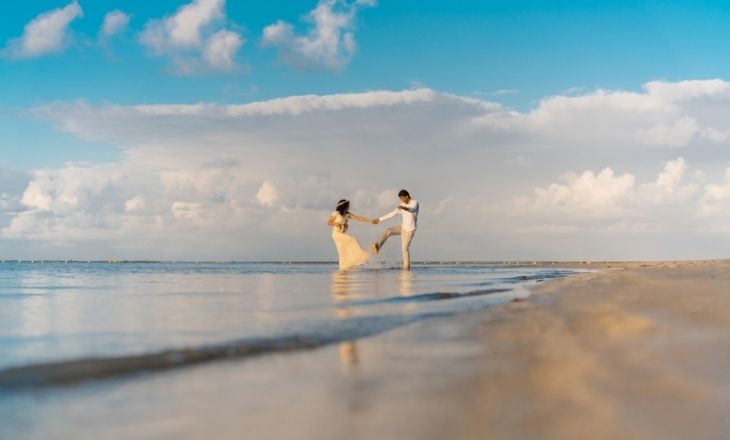
Couples who merge their personalities as one lose the opportunity to truly enjoy the diversity of their characteristics and that of a new location.
And with this long introduction, I come to the topic in hand, ‘Exotic Destinations for Honeymoon in India’ - some awe-inspiring locations brimming with incredible delights that will inspire you to explore their landscapes and enjoy new profound experiences. These places will set a backdrop for your new life together, and I mean this in the basic sense of true union and individualistic joy by experiencing yourself and your partner.
1. TAWANG |
Tawang, at the height of 10,000 ft, Tawang captures the essence of two countries together – India and Tibet. A place endowed with mountains, fresh mountain air, deep valleys, waterfalls, and many lakes. In winters, it’s a walk in the monochromatically brilliant composition of white and black as you leave the main town and explore the outside.
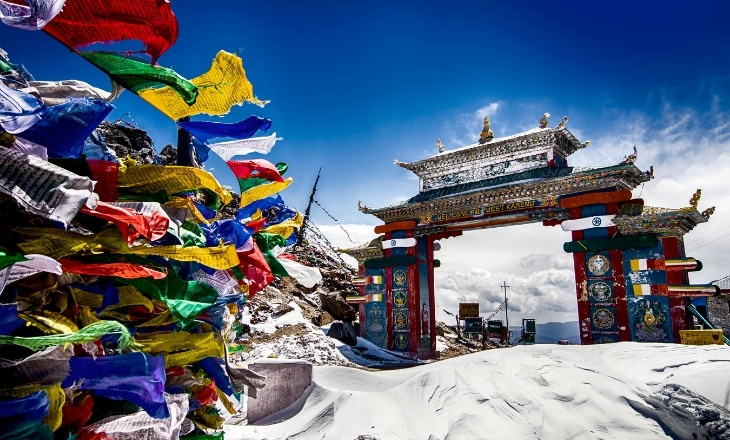
Getting There
Although it is an arduous journey by road, it is equally exhilarating. You pass by quaint hamlets on your way, treading carefully on the steep, treacherous road. On the other side, the cotton-soft clouds are clashing with the mountains, River Kameng running down the valley. You might look this way and that; try to take some shots and marvel over the beautiful scenery with your partner slowly getting acclimatized with the surrounding. As you come closer to the snow-covered sacred Sela pass (13400 ft.) – the spectacular decorative gate to Tawang, it feels like a milestone is achieved. It is a perfect place to capture a moment together with your partner where the brightly coloured flags are fluttering in the backdrop.
78 km further is Tawang town, and every effort you make to reach here is paid off in multitude when you see the stunning view all around you. On one side, the majestic Geshila peak stands guard not far from Tawang town. On the other side, the historical Tawang monastery from 1681 with a red-yellow roof perched atop a mountain cuts a striking figure and dominates everything around and below it.
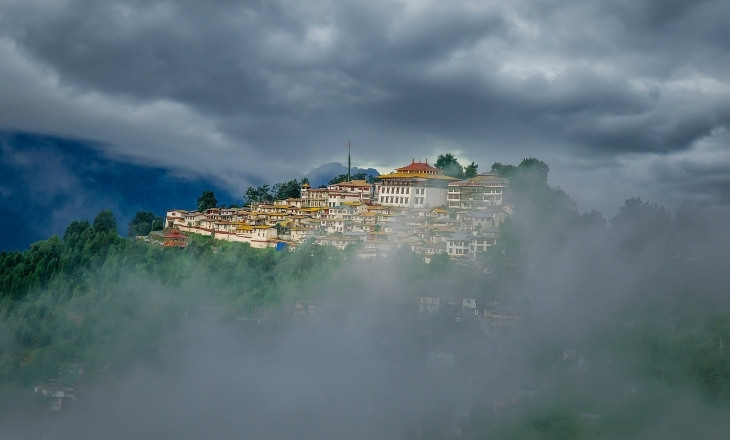
Tawang derived its name after the principal figure of the district – the Tawang Monastery. Legend has it this site was chosen by a horse as a divine intervention when his master Merag Lama Lodre Gyatso was praying for guidance to select a place to establish a monastery. The mountain where his horse had wandered off and later found is today the site of the largest monastery in India and 2nd largest in the world. The hills and mountains form a protective barricade for the people inhabiting this area. Two important rivers in Tawang –Chu and Nymjang-Chu are the repository of numbers of turbulent tributaries running through wild mountains and daunting gorges. Tawang is also home to high altitude birds, mammals, reptiles, snow leopard, barking deer, musk deer, bear roam freely without fear.
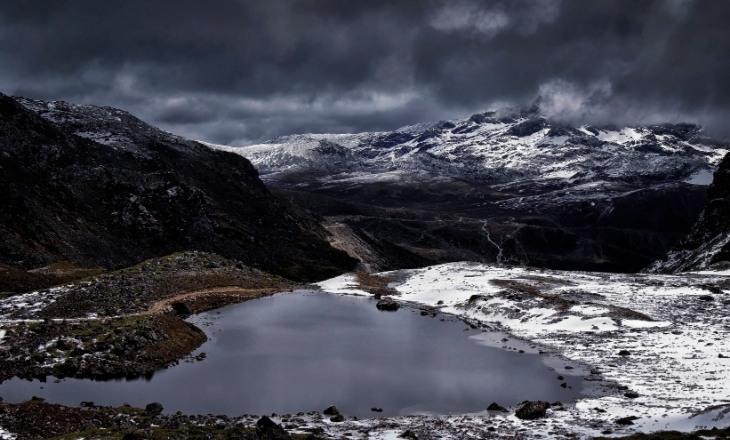
It was predominantly a land of the Monpa tribe once but over time saw its share of disputes between China-Tibet, British Raj, and India. Luckily for all of us, Tawang is a peaceful place with emphasis laid on the cultural and spiritual significance for Indians and Tibetians equally. Tawang has many comfortable lodges, and the people here provide humbling hospitality in simple, unassuming ways.
Places of interest
1. Urgyelling at 4 Kms from Tawang: Birthplace of Thangyang Gyatso. Bramadug Chaung / Sengsarbu Ani Monastery, Gyanggong Ani Monastery, Nunneries located in the far reaches of the mountains
2. Jaswant Garh at 63 Kms: War memorial founded in memory of Martyrs of the 1962 India-China War.
3. Zemithang at 94 Kms: Brokenthang waterfalls. Gorsam Chorten, Sarsang, Sandrukpen Monastery was built in stone in the 17th to 18th centuries.
4. Taktsang at 46 Kms: Sangetsar (Madhuri) lake, home of snow pigeon and musk deer. Buddhist pilgrimage centre, where Guru Padma Sambhwa is reported to have offered prayers.
5. P.T. Tso Lake at 17 Kms: a splendid lake between the mountains, though frozen for 4–5 months of the year. 3 km further is Nagula Lake.
6. Jang at 34 Kms: Nuranang waterfalls, Gorichan peak, a proposed wildlife sanctuary for protecting red panda and musk deer, Lhou- proposed reserved forest.
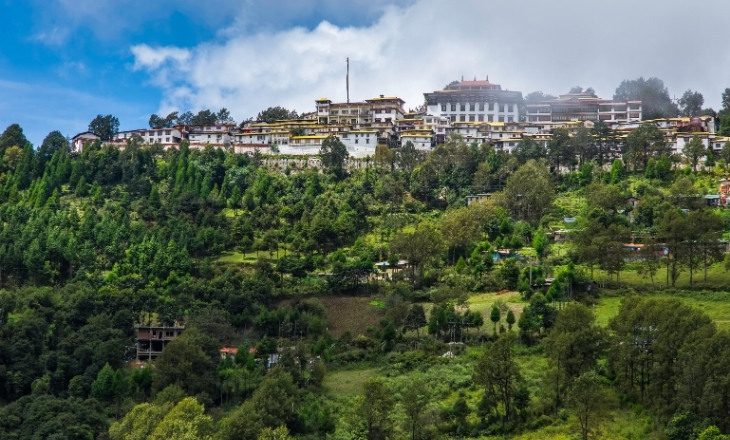
How to Reach
From Guwahati or Tezpur, you have to go to Bhalukpong in the West Kameng district of Arunachal Pradesh, and from there via Bomdila and Sela Pass, you can go to Tawang by road. (Tezpur to Bomdilla 165km, Bomdilla to Tawang 183 km). Tawang has no railway station. The nearest railway station is Tezpur. You can hire a cab or car from Tezpur to reach Tawang.
Airports/Helipads
a) Tawang Helipad
b) Salonibari Domestic Airport ( Tezpur ) – 358 km.
c) Lokpriya Gopinath Bordoloi International Airport (Guwahati) - 480 Km.
Note - Visitors to Tawang require a special Inner Line Permit (ILP). Permission can be obtained from offices based in Kolkata, Guwahati, Tezpur, and New Delhi.
2. JAWAI/BERA |
The name itself sounds exotic, piquing curiosity; the enigma does, in fact, live up to its expectation because this is your holiday African safari-style, offered right here in Rajasthan.
It is one of those places that will bring you and your partner the thrill, the adventure, and peace all wrapped up in one.
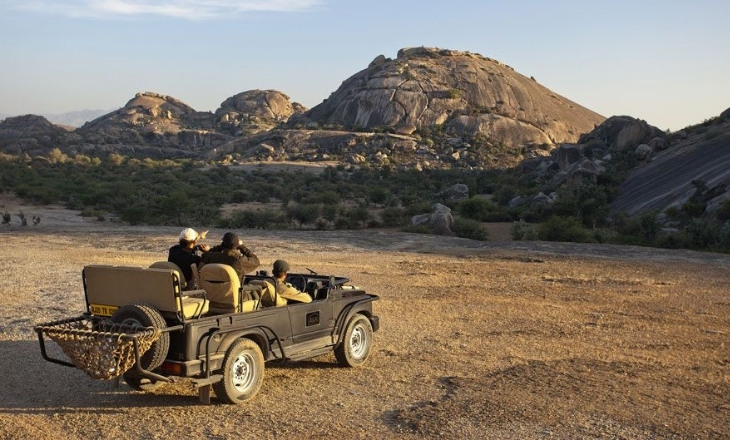
Bera, a small town in central Rajasthan’s Pali district surrounded by the rocky Aravalli Hills, is sustained by the Jawai River. Together Bera and Jawai form a region called the leopard country, offering rare sights of leopards roaming freely.
The arid landscape is scattered with granite rocks formed after cooling down of molten lava millions of years ago. These rocks are now home to the elusive cats who reside in its caves and fissures. Jawai and Bera stand at a point where ecological strengths are put to the test, proving humans and wildlife's harmonious co-existing. An uncanny balance between the two is evident when you see both the species fearlessly going about their day. Also, the villagers revere the lofty leopard as the protector of the deities residing in this region and, therefore, give them a wide berth. These solitary leopards hunt animals from pasture and many times the livestock from the village; however, villagers are proud of the fact that the leopards have never attacked humans to date.
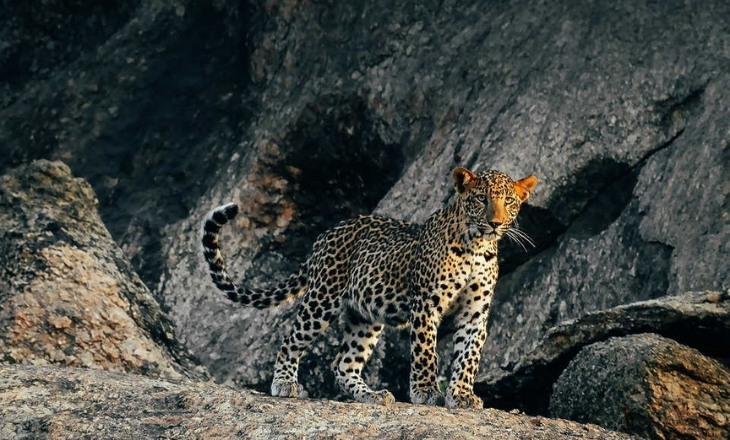
Jawai/Bera is the place where wildlife meets luxury, and that makes it a perfect honeymoon location. Besides the wonderful wildlife, various excellent accommodation has made this region even more hospitable for Indian and international visitors alike. From heritage castle to luxurious safari camps with naturally immersive tents, albeit with all amenities, are taking extreme care in providing experiential travel.
The luxury tents are your private heaven, secluded and intimate. Their management makes sure you are well-taken care of but in a non-intrusive way. Leopard safaris operate two times a day, early morning and evening. The cats usually nap in the day time, preferring to mingle early at dawn and dusk. It is a sight to behold when the majestic beast makes its first appearance. Whether they are sitting on the hills as if on a throne or regally standing looking down their noses, revelling and yet impervious to your adoration, only makes these creatures more enchanting.
Safaris are carried out in a customized safari vehicle with well-trained drivers, trackers, and guides. Normally, it takes 3-4 hours to complete a one-time leopard safari, although it may take less if you sight them early and if the sighting zone is closer.
Lunch and dinners are both international dishes and local flavours. The safari camps provide a marvellous setting in the open with sights of the beautiful hills, fresh air, and solitude.
The evenings could be especially spectacular and romantic with sundowner drinks while enjoying the breathtaking view of the sunset.
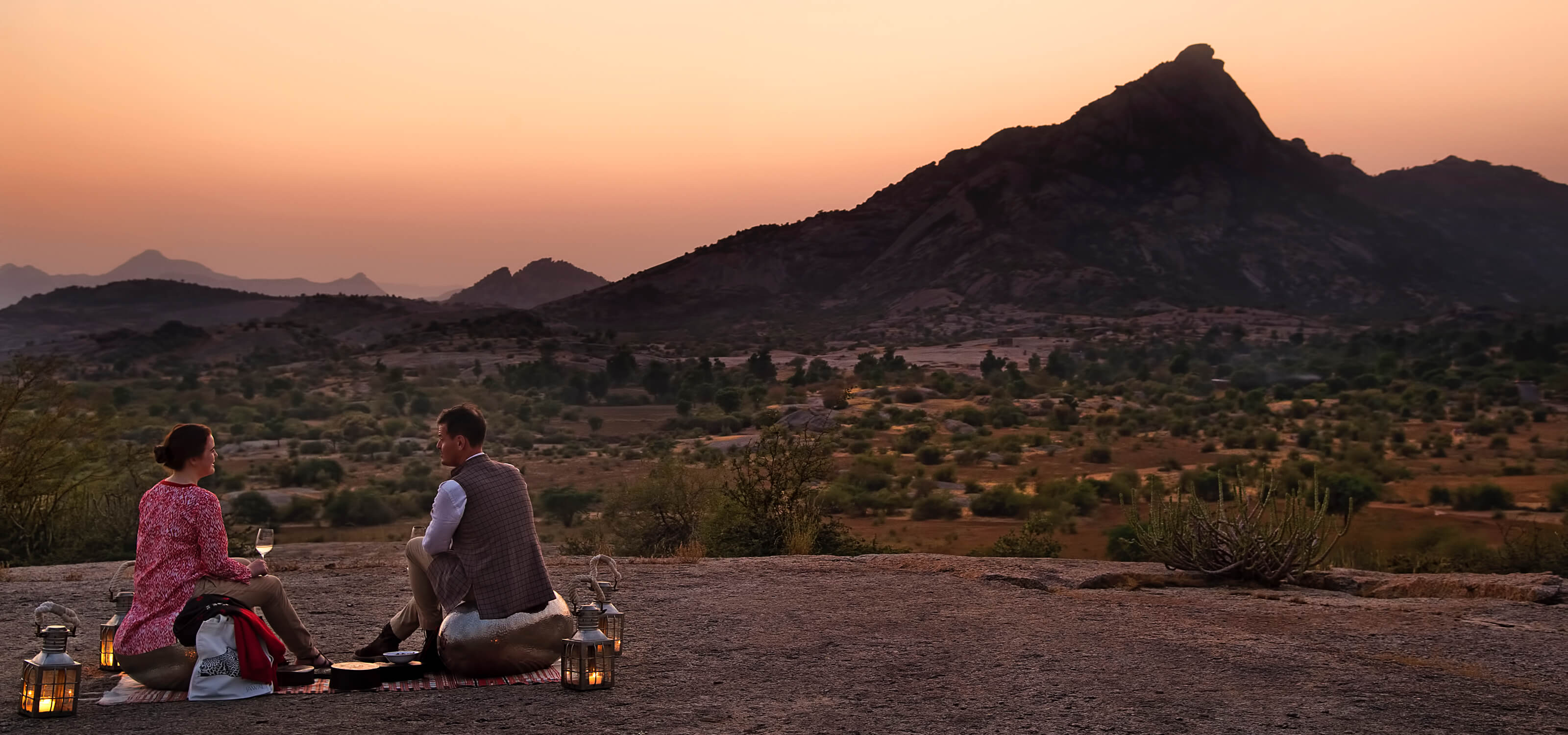
The safari trails include
Leopard Safari in The Jawai Hills Leopard Sanctuary & Kambeshwar Ji Leopard Sanctuary
Jungle Safari for wild animals like wolf, jackals, striped hyenas, wild cats, and
Chinkaras.
Crocodile Sightings in Jawai Dam Crocodile Sanctuary
Birdlife Safari around the Jawai dam - home to several migratory birds.
Village Safari to familiarize with the Rabari tribe, local culture, and insights into some of the conservation against habitat loss and civic projects for rural development.
.jpg)
How to Reach Bera
By Road: Bera can be reached from Udaipur (140 km) in about 3 hours.
By Rail: Jawai Bandh (28 km), Falna (40 km), and Udaipur (140 km) are the closest railway stations to Bera.
By Air: The nearest airports to Bera are Udaipur (161 km), Jaipur (398 km), New Delhi (607 km).
3. MARARIKULAM |
A quintessential hideaway for the hopeless romantics in India's southwestern corner boasts a fine living with its quaint atmosphere, long sandy beaches strapped with ultramodern luxury.
Mararikulam’s Marari Beach bordering the Arabian sea is secluded and thriving with excellent resorts and posh villas providing a wide range of facilities and premium services. It is one of those places where everything slows down, and you sway along with green palm trees to the gentle ways of life. Pristine view and soulful rendition of the never-ending waves lapping at the shore will fill your senses with delight.
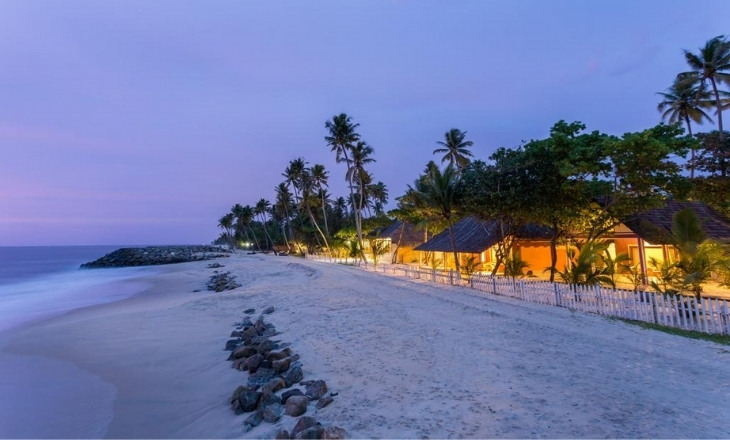
Waking up to a tranquil sunrise to late-night walks, relaxing on hammocks, cajoling and embracing on the beach under the canopy of stars; newlyweds on the cusp of a new beginning shall find this time riveting. Enjoying candlelight dinners and laughing at the endless banter of your old memories and the excitement of a future together. One of the highlights of your day will be your meals together; the delicious regional cuisine is par excellence catering to vegetarians and seafood lovers alike. Explore and connect with the culture and people through their original and most popular foods.
For deeper insights into the locals and photography, visit the Marari village, which is embedded with Kerala's fishing culture. During peak hours, the area is active, with local fishermen busy with their fishing nets and fixing for their next fishing trips.
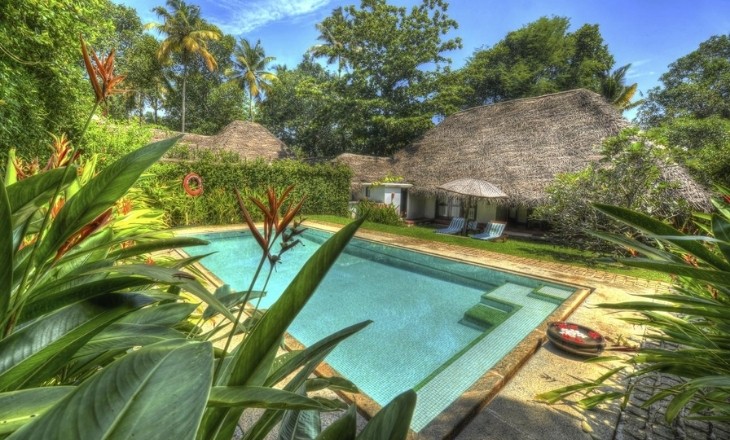
Things to do
Adventure Galore: like scuba dive, windsurfing, and parasailing in its azure waters.
Ayurvedic Massage: Rejuvenate mind, body, and soul.
Nature Walks with experts: a unique ecosystem for nature lovers,
Vembanad Lake: board the private houseboat cruise on the backwaters in Alleppey.
Chinese Fishing Net: A traditional method of fishing, popular across the globe photography.
In the mood to jive? Port town of Cochin is a little over one hour's drive. And if you want to stretch your itinerary, you can add longer routes by venturing further for stays in the tea plantations of Munnar and the wildlife in Periyar.
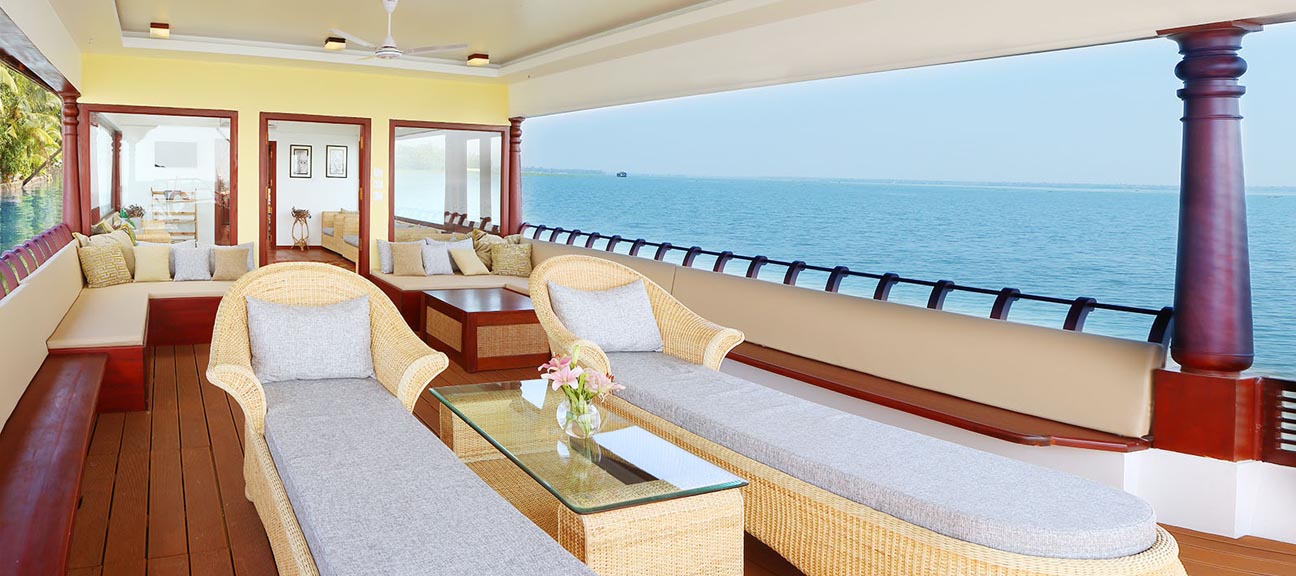
How to Reach
By Road: Mararikulam is also well-connected with the other corners of the state. Visitors from almost all across Kerala can reach Mararikulam by road.
By Train: The nearest railway stations are Alleppey (16 km), Kottayam (42kms), and Cochin (Ernakulam) (55 km).
By Air: Nearest is Cochin International Airport at 75 km. From here, you can hire a private vehicle for the rest of your tour.
4. LAKSHADWEEP |
As you approach the Lakshadweep islands by air, below numerous atolls that look like lagoon is a shallow saucer-shaped depression stand out against blue ocean with their wide-ranging reef system visibly spreading offshore.
You will be amazed to know that when you are in Lakshadweep, you are on a crest of a geological phenomenon called a submarine ridge. This ridge is a submerged mountain in the Indian Ocean connecting Lakshadweep, Maldives, and Chagos archipelago, known as Chagos-Laccadive Plateau. Pretty awesome, isn’t it?
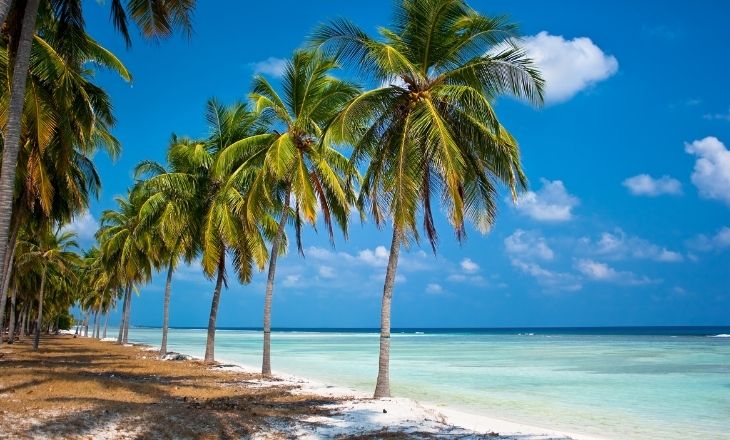
Out of the 36 islands, only 10 are operational, and each one of them is a veritable paradise. This is a true getaway from the modern world, a lot like the Robinson Crusoe story. White sandy beaches, sapphire sea, open sky, and stretches of lush green tropical vegetation create a mystical aura around this incredible ecosystem. Your day could be very busy making sandcastles, lounging on hammocks, sipping mocktails, playing hide and seek, and savouring delicious food.
Besides, the wide expanses of the shallow lagoons offer an idyllic setting for water sports lovers. All the islands are equipped with kayaks, canoes, pedal boats, sailboats, windsurfers, snorkels sets glass-bottomed boats. Lakshadweep has immense marine life, and the fantastic coral reef formation can be seen through a water-glass. These masses of coral appear a wonderland of beauty, with fishes of marvellous colouring darting in and out of their fairy grottoes.
.jpg)
Book your travels and accommodation well in advance as only a specific number of visitors are allowed at one point in time. The tourists' cottages in the islands are built on the beachfront and provide a stunning lagoon view.
Islands to Visit
Androth Island: the biggest island in the group.
Minicoy Island: is the farthest in the group, close to the Maldives and an important centre for tuna fishing and a tuna-canning factory on the island.
Kadmat Island: Relish Delicious local food and stay in huts aesthetically situated in the coconut palm groves on the beaches facing the lagoon
Agatti Island: one of the most accessible islands in Lakshadweep as the airport is here.
Kavaratti Island: Headquarters of the Administration, witness mesmerizing sunsets and enjoy the beautiful and calm lagoon offering an ideal spot for water sports, swimming and snorkelling.
Kalpeni Island: the identifying mark is the huge storm bank of coral debris along its eastern and southeastern shorelines.
Bangaram Atoll: very close to Agatti and Kavaratti and the only island where alcohol is permitted. At night you will be thrilled to see the phosphorescent plankton washed ashore on the coral sands imparting a bluish glow to the beach.
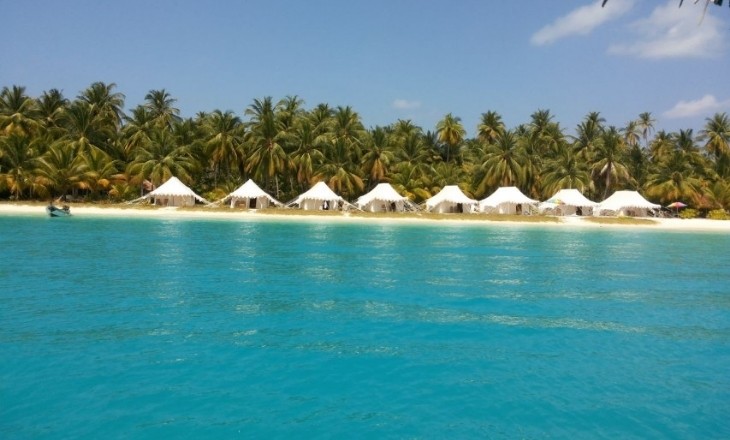
Note: The entry to the Lakshadweep islands is restricted. One requires an entry permit from Kochi to visit these islands.
Do not pick up corals as souvenirs. It is a punishable offence. Alcoholic drinks, intoxicants are prohibited on all islands except Bangaram.
How to reach
Lakshadweep Island can be reached via Kochi for all tourism purposes.
By Air
Agatti and Bangaram islands can be reached by flight from Kochi. From Agatti, boats are available to Kavaratti and Kadmat. Helicopter transfer is available from Agatti to Kavaratti. The flight from Cochin to Agatti takes approximately one hour and thirty minutes.
By Ship
Seven passenger ships operate between Kochi and Lakshadweep islands. The passage takes 14 to 18 hours, depending on the island of arrival. The ships offer different classes of accommodation: A/C First Class with two-berth cabins, A/C Second Class with four-berth cabins, and push back/Bunk Class with A/C seating. All modes of transportation are subject to availability and according to the prevailing season.
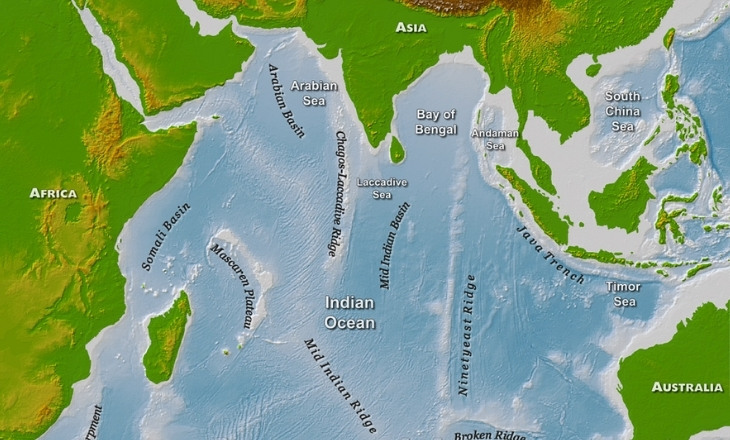
Saying Farewell |
It is transforming to explore new landscapes and focus on new visual experiences, where you find a reorientation with moving forward in time and space by the emphasis on displacement will forge an intimate relationship between the emotional and physical landscape of your wedding journey.
.png)

.jpg)
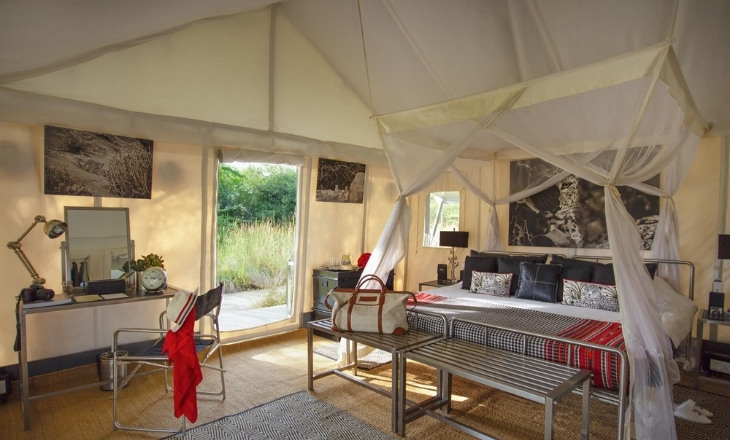
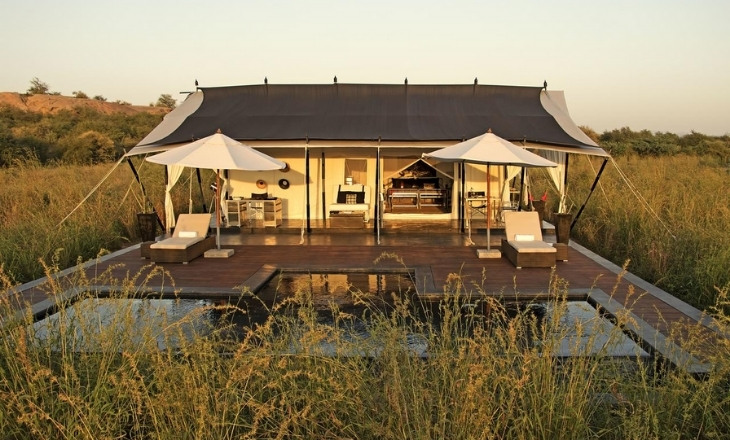


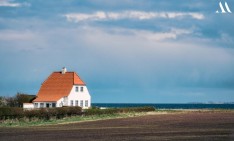
.jpg )



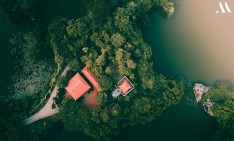
.jpg )
